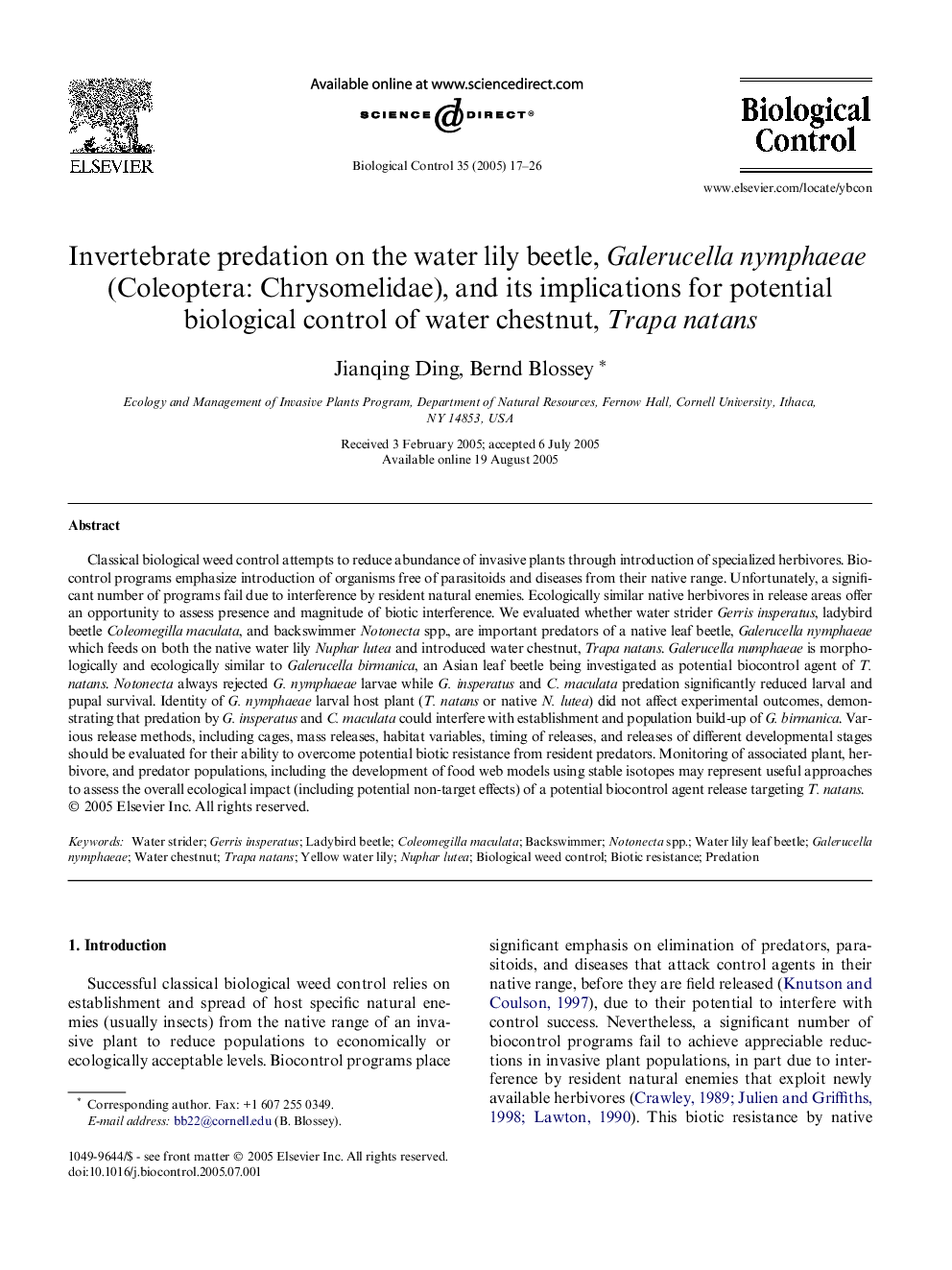| کد مقاله | کد نشریه | سال انتشار | مقاله انگلیسی | نسخه تمام متن |
|---|---|---|---|---|
| 9471912 | 1321145 | 2005 | 10 صفحه PDF | دانلود رایگان |
عنوان انگلیسی مقاله ISI
Invertebrate predation on the water lily beetle, Galerucella nymphaeae (Coleoptera: Chrysomelidae), and its implications for potential biological control of water chestnut, Trapa natans
دانلود مقاله + سفارش ترجمه
دانلود مقاله ISI انگلیسی
رایگان برای ایرانیان
کلمات کلیدی
موضوعات مرتبط
علوم زیستی و بیوفناوری
علوم کشاورزی و بیولوژیک
علوم زراعت و اصلاح نباتات
پیش نمایش صفحه اول مقاله

چکیده انگلیسی
Classical biological weed control attempts to reduce abundance of invasive plants through introduction of specialized herbivores. Biocontrol programs emphasize introduction of organisms free of parasitoids and diseases from their native range. Unfortunately, a significant number of programs fail due to interference by resident natural enemies. Ecologically similar native herbivores in release areas offer an opportunity to assess presence and magnitude of biotic interference. We evaluated whether water strider Gerris insperatus, ladybird beetle Coleomegilla maculata, and backswimmer Notonecta spp., are important predators of a native leaf beetle, Galerucella nymphaeae which feeds on both the native water lily Nuphar lutea and introduced water chestnut, Trapa natans. Galerucella numphaeae is morphologically and ecologically similar to Galerucella birmanica, an Asian leaf beetle being investigated as potential biocontrol agent of T. natans. Notonecta always rejected G. nymphaeae larvae while G. insperatus and C. maculata predation significantly reduced larval and pupal survival. Identity of G. nymphaeae larval host plant (T. natans or native N. lutea) did not affect experimental outcomes, demonstrating that predation by G. insperatus and C. maculata could interfere with establishment and population build-up of G. birmanica. Various release methods, including cages, mass releases, habitat variables, timing of releases, and releases of different developmental stages should be evaluated for their ability to overcome potential biotic resistance from resident predators. Monitoring of associated plant, herbivore, and predator populations, including the development of food web models using stable isotopes may represent useful approaches to assess the overall ecological impact (including potential non-target effects) of a potential biocontrol agent release targeting T. natans.
ناشر
Database: Elsevier - ScienceDirect (ساینس دایرکت)
Journal: Biological Control - Volume 35, Issue 1, October 2005, Pages 17-26
Journal: Biological Control - Volume 35, Issue 1, October 2005, Pages 17-26
نویسندگان
Jianqing Ding, Bernd Blossey,